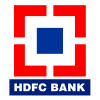Unsecured OD Limit
Unsecured OD Limit
An unsecured loan is a type of loan that is not backed by any collateral. This means that the borrower does not need to provide any asset, such as a car or a house, to secure the loan.
Enquire Now
An Unsecured Overdraft (OD) Limit is a type of financial facility provided by banks that allows individuals or businesses to withdraw funds beyond their actual account balance without needing to provide collateral. Unlike secured overdrafts, where assets like property or fixed deposits are pledged, an unsecured OD limit offers the flexibility of accessing additional funds without tying up your assets.
How Unsecured OD Limits Work
With an unsecured OD limit, the bank extends a pre-approved limit, allowing you to overdraw your account up to a specified amount. This facility is particularly useful for managing short-term cash flow needs, unexpected expenses, or operational costs in a business. The main advantage is that you don't need to provide any security or collateral to access these funds.
Features of Unsecured OD Limits
No Collateral Required
The most significant feature of an unsecured OD limit is that it does not require any collateral. This makes it accessible for individuals and businesses who may not have substantial assets to pledge or prefer to keep their assets unencumbered.
Interest Only on Utilized Amount
Interest is charged only on the amount you have overdrawn, not on the entire OD limit. This means if you have a sanctioned limit of, say, $10,000 and you use only $2,000, the interest will only apply to the $2,000.
Flexible Repayment
Unsecured ODs typically do not have a fixed repayment schedule. You can repay the overdrawn amount at your convenience, as long as it remains within the agreed terms. This flexibility allows you to manage your finances more effectively, especially during periods of fluctuating cash flow.
Quick Access to Funds
With an unsecured OD limit, you have instant access to additional funds whenever needed, without going through a lengthy approval process each time. This can be particularly beneficial for businesses that require immediate cash for operational needs.
Factors Affecting Unsecured OD Limits
Several factors influence the approval and amount of an unsecured OD limit:
Creditworthiness
The bank will assess your credit history and financial stability before granting an unsecured OD limit. A strong credit score and consistent income can increase your chances of obtaining a higher limit.
Income and Business Performance
For businesses, the bank may consider the company's financial performance, revenue, and profitability when determining the OD limit.
Banking Relationship
A strong relationship with your bank, including a history of regular transactions and prompt repayments, can positively influence the OD limit offered to you.
Benefits and Considerations
An unsecured OD limit provides quick access to funds and flexibility in managing short-term financial needs. However, it is essential to use this facility judiciously. The interest rates on unsecured ODs are typically higher than those on secured loans, and continuous overuse of the overdraft can lead to higher financial costs.
An unsecured OD limit is a convenient and flexible financial tool that offers immediate access to funds without the need for collateral. It is particularly useful for individuals and businesses needing to manage cash flow or cover unexpected expenses. However, it should be used responsibly to avoid unnecessary debt and financial strain.



